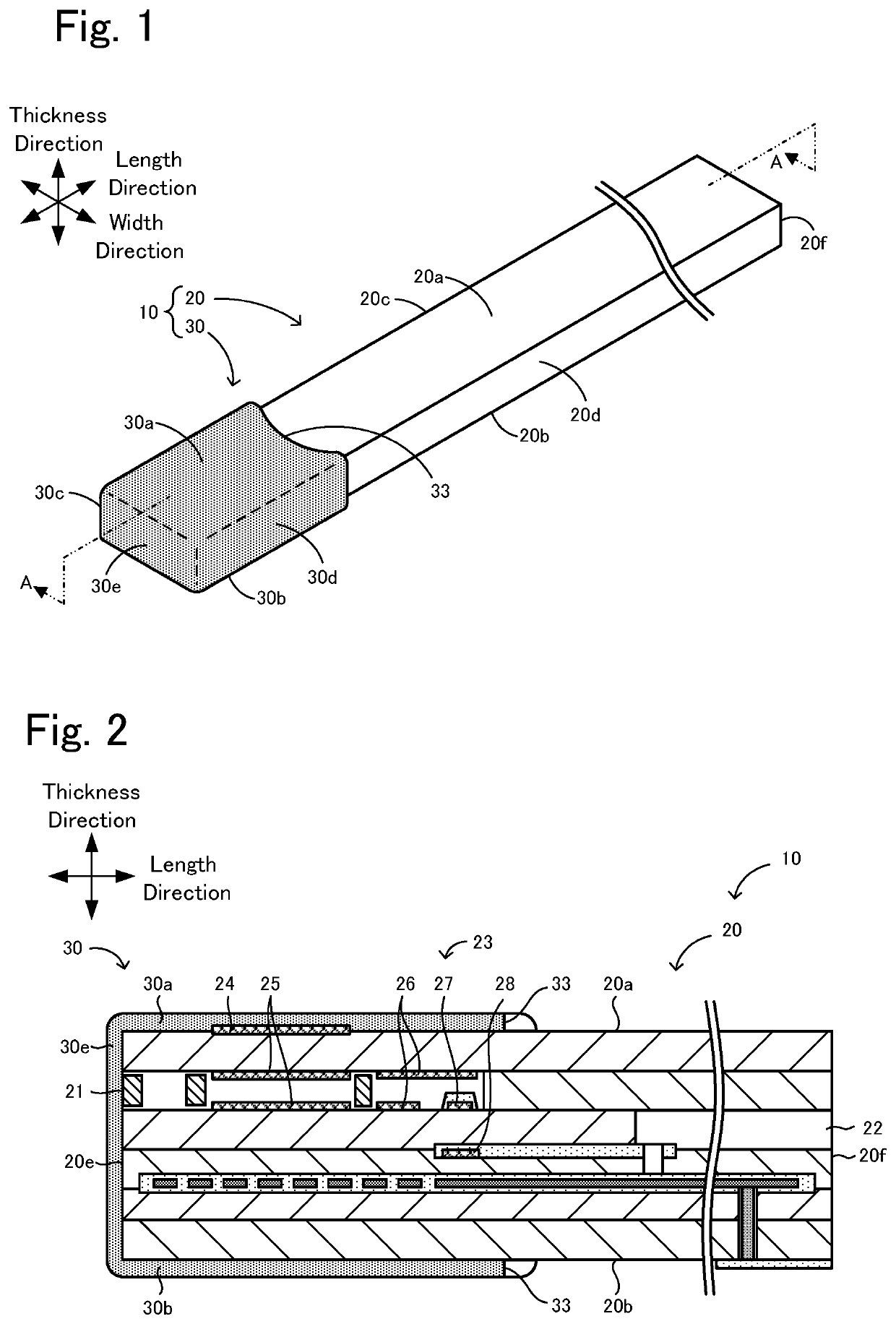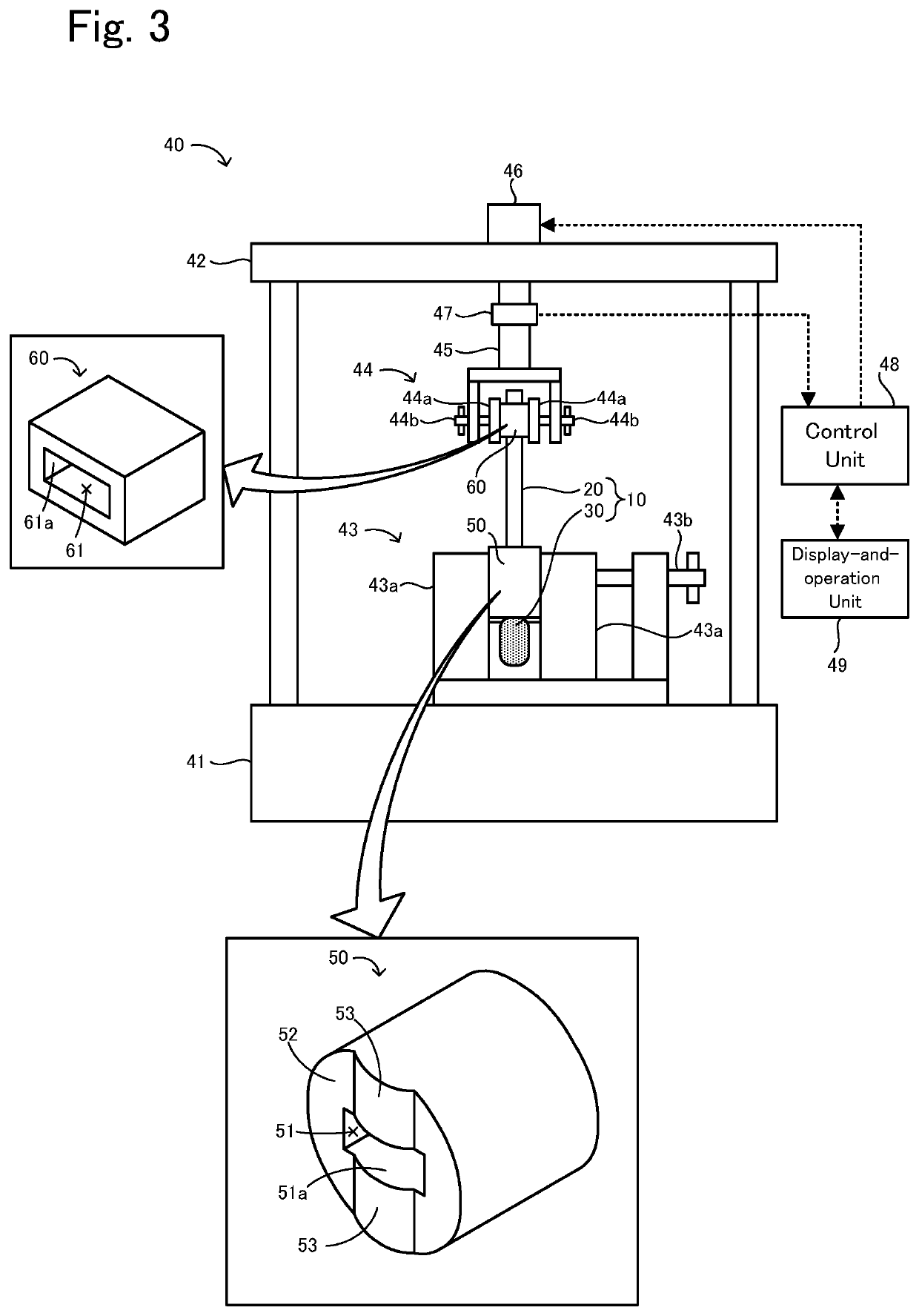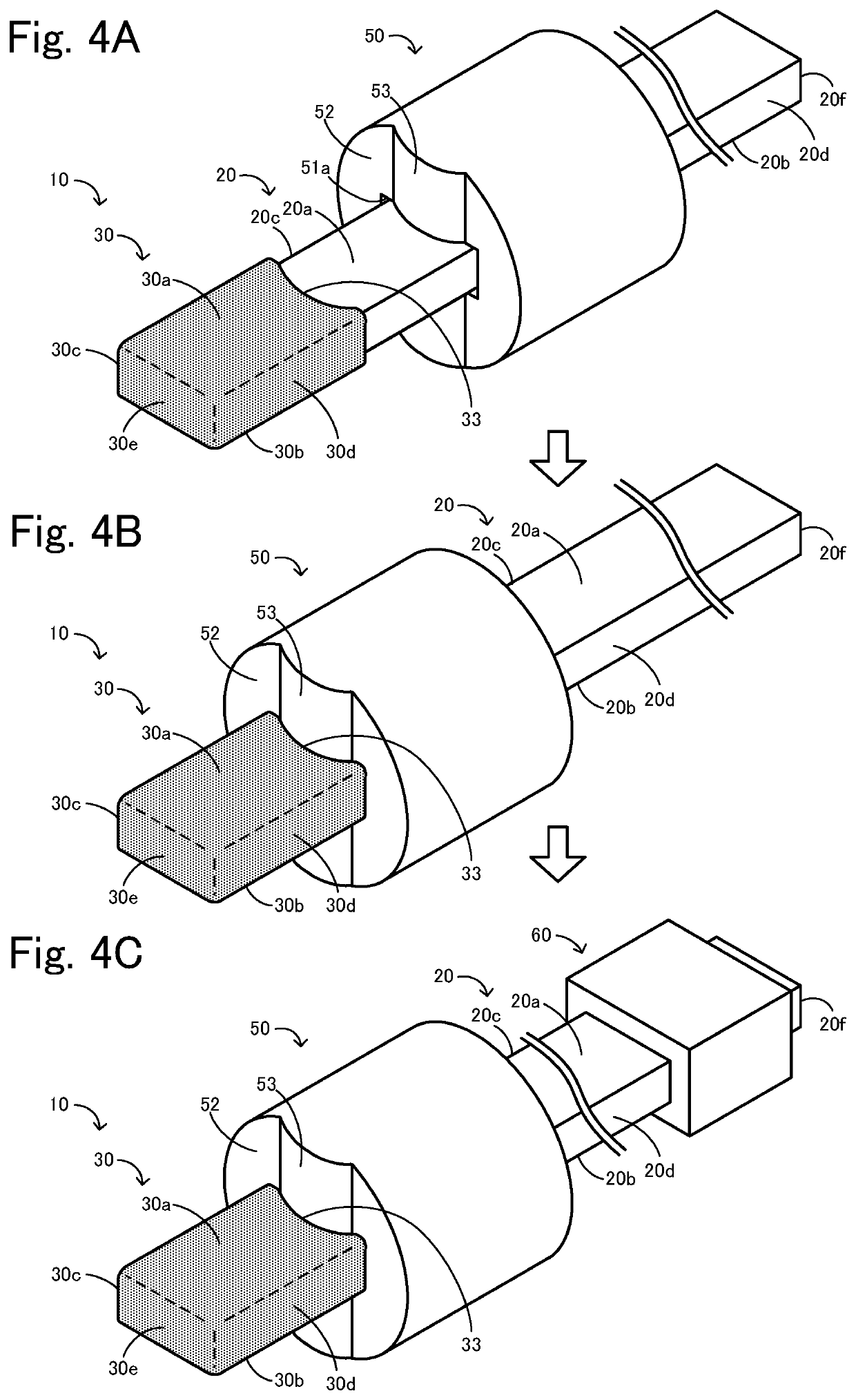Method of measuring adhesive strength
a technology of adhesive strength and measurement method, which is applied in the direction of instruments, mechanical devices, and mechanical devices using mechanical means, can solve the problems of wide achieve the effects of reducing the variation in the measured adhesive strength, suppressing the damage of the porous protection layer, and improving measurement accuracy
- Summary
- Abstract
- Description
- Claims
- Application Information
AI Technical Summary
Benefits of technology
Problems solved by technology
Method used
Image
Examples
working example 1
[0079]The adhesive-strength measurement including the steps (a) and (b) described above was conducted on each of the sensor elements A to E as Working Example 1. First, a peeling jig 50 and a holding jig 60 were prepared. The peeling jig 50 had a diameter of 8.7 mm, with a through hole 51 having an opening size of 1.7 mm by 4.6 mm and an axial length of 10 mm. The peeling jig 50 was made of SKD11. The projections 53 of the peeling jig 50 each had a height of 0.5 mm, the same as the depth of the recesses 33, so as to conform to the recesses 33. The holding jig 60 was shaped as a rectangular-parallelepiped body having a size of 3.45 mm by 6.25 mm by 14.5 mm. The through hole 61 had an opening size of 1.45 mm by 4.25 mm and an axial length of 14.5 mm. The holding jig 60 was made of NBR70. The hardness of the holding jig 60 that was measured with a type-A durometer in accordance with JIS K 6253-3:2012 was 70.
[0080]In the step (a), as with the case illustrated in FIGS. 4A to 4C, the peel...
PUM
| Property | Measurement | Unit |
|---|---|---|
| speed | aaaaa | aaaaa |
| speed | aaaaa | aaaaa |
| thickness | aaaaa | aaaaa |
Abstract
Description
Claims
Application Information
 Login to View More
Login to View More - R&D
- Intellectual Property
- Life Sciences
- Materials
- Tech Scout
- Unparalleled Data Quality
- Higher Quality Content
- 60% Fewer Hallucinations
Browse by: Latest US Patents, China's latest patents, Technical Efficacy Thesaurus, Application Domain, Technology Topic, Popular Technical Reports.
© 2025 PatSnap. All rights reserved.Legal|Privacy policy|Modern Slavery Act Transparency Statement|Sitemap|About US| Contact US: help@patsnap.com



